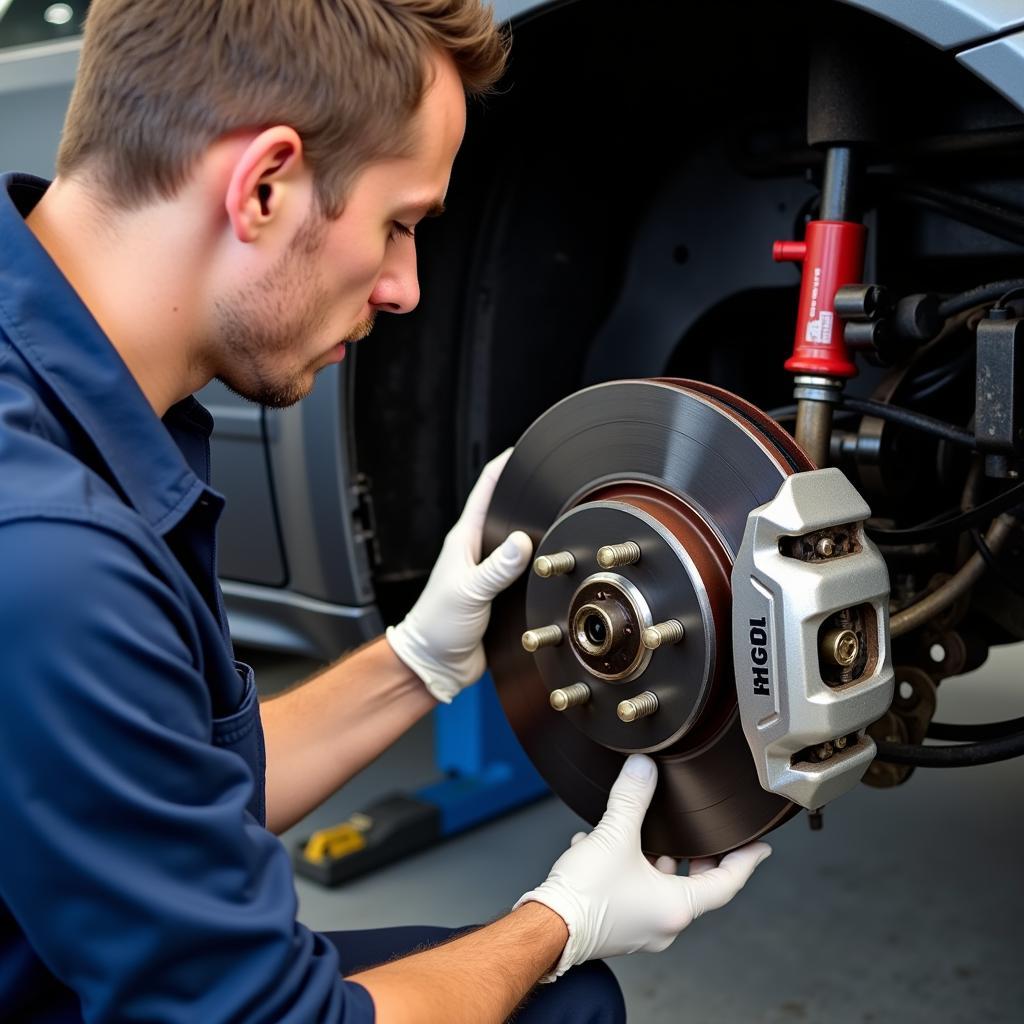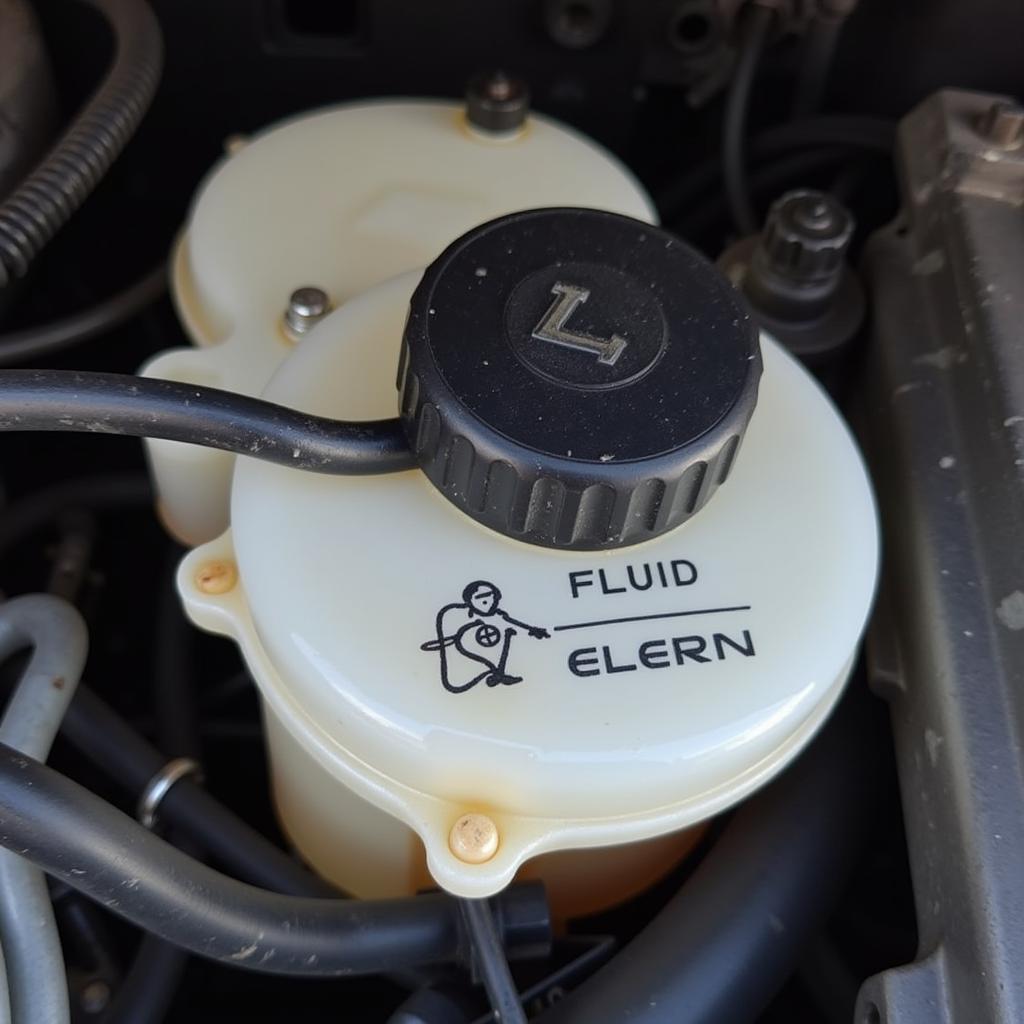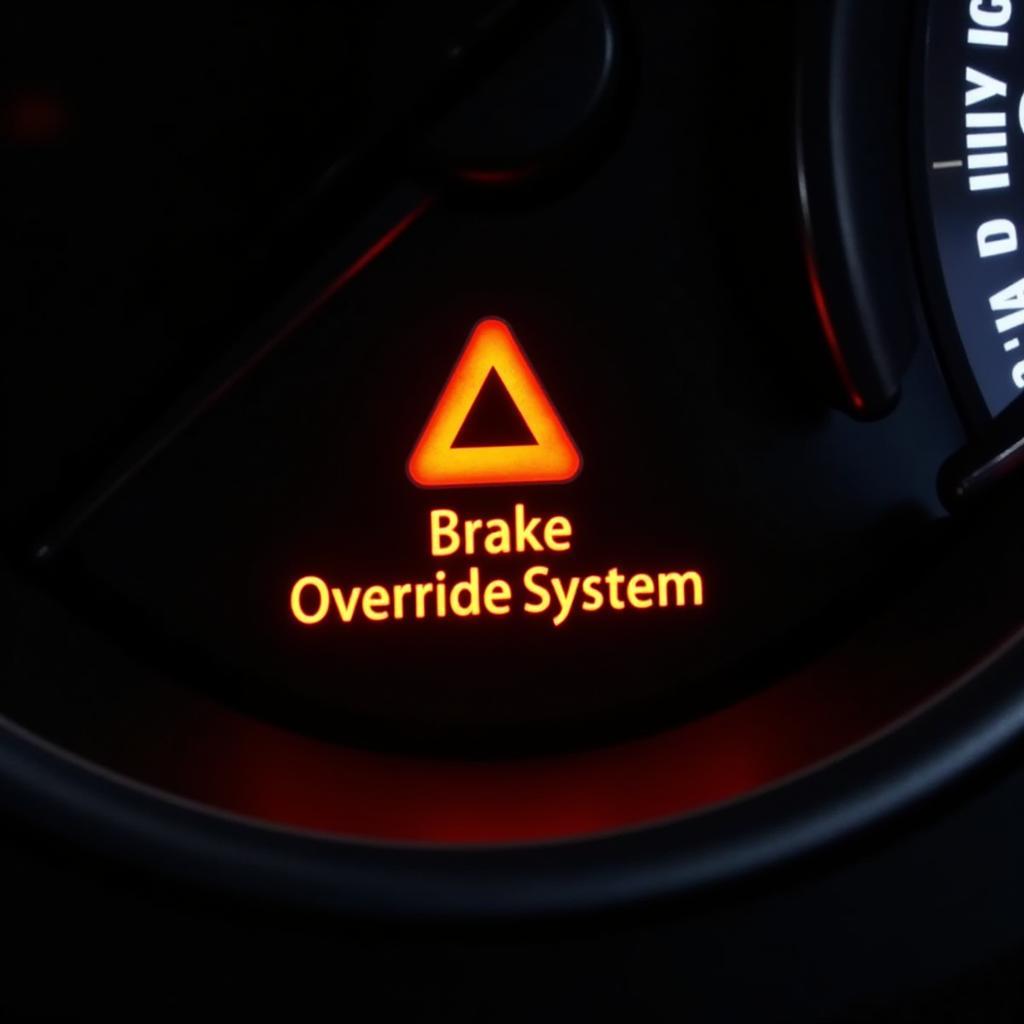The electronic brake force distribution (EBD) warning light is a crucial safety indicator in your vehicle. If it illuminates, it signals a potential issue with your braking system that requires immediate attention. Ignoring this warning could compromise your vehicle’s braking performance and put you and your passengers at risk. This article will delve into the intricacies of the EBD system, the reasons why the warning light might activate, and how to address the problem effectively.
What is Electronic Brake Force Distribution (EBD)?
EBD is a sophisticated technology designed to optimize braking performance by automatically adjusting the braking force applied to each wheel. This is especially crucial during hard braking or when driving on uneven surfaces. By dynamically distributing brake pressure, EBD prevents wheel lock-up, enhances stability, and shortens stopping distances. It works in conjunction with the Anti-lock Braking System (ABS) to provide maximum control and safety during braking. The system uses sensors to monitor wheel speed, steering angle, and vehicle load to determine the optimal brake force distribution.
 Electronic Brake Force Distribution System Diagram
Electronic Brake Force Distribution System Diagram
Why is My Electronic Brake Force Distribution Warning Light On?
There are several reasons why your EBD warning light might be illuminated. These can range from simple issues like a malfunctioning sensor to more complex problems with the ABS module or hydraulic system. Some common causes include:
- Faulty ABS Wheel Speed Sensor: These sensors provide crucial data to the EBD system. If a sensor malfunctions, it can disrupt the system’s ability to accurately distribute brake force.
- Low Brake Fluid: Insufficient brake fluid can prevent the system from building adequate pressure, triggering the warning light.
- Malfunctioning ABS Module: The ABS module is the brain of the system, controlling the EBD function. If the module fails, the entire system can be compromised.
- Damaged Wiring or Connectors: Corrosion or damage to the wiring or connectors can disrupt communication between the various components of the EBD system.
- Hydraulic System Issues: Problems within the hydraulic system, such as leaks or blockages, can also trigger the EBD warning light.
Troubleshooting the EBD Warning Light
If your EBD warning light is on, it’s crucial to address the issue promptly. While some troubleshooting steps can be performed at home, others require specialized diagnostic equipment and expertise.
- Check Brake Fluid Level: Ensure the brake fluid reservoir is full. Low brake fluid can trigger the warning light. If the fluid is low, top it off and check for leaks.
- Inspect Wiring and Connectors: Visually inspect the wiring and connectors for any signs of damage or corrosion. Repair or replace any damaged components as needed.
- Scan for Diagnostic Trouble Codes (DTCs): Using an OBD-II scanner, you can retrieve diagnostic trouble codes that pinpoint the source of the problem. This can save you valuable time and effort in the diagnostic process.
If the problem persists after these initial checks, it’s essential to seek professional assistance. A qualified technician can perform a thorough diagnosis using specialized equipment and determine the necessary repairs.
Remote Diagnostics and Software Solutions
In many cases, EBD issues can be diagnosed and resolved remotely using advanced software and diagnostic tools. This allows for faster and more efficient repairs, minimizing downtime. Remote programming and software updates can also address software-related glitches that might be triggering the warning light. This service provides convenience and cost-effectiveness, especially for complex issues requiring specialized software intervention.
2015 audi a6 brake pad warning light reset
When to Seek Professional Help
While some EBD issues can be addressed with DIY troubleshooting, it’s crucial to know when to seek professional help. If the problem persists after initial checks, or if you’re uncomfortable working on your vehicle’s braking system, it’s best to consult a qualified technician.
- Persistent Warning Light: If the warning light remains illuminated after checking brake fluid and inspecting wiring, further diagnosis is needed.
- Unusual Braking Behavior: Any unusual braking behavior, such as pulling to one side or a spongy brake pedal, should be addressed immediately by a professional.
- Lack of Expertise: If you’re not comfortable working on your vehicle’s braking system, it’s always safer to consult a professional.
 Mechanic Diagnosing Car Brake System
Mechanic Diagnosing Car Brake System
Conclusion
The electronic brake force distribution warning light is a critical safety indicator that should never be ignored. Understanding the causes and troubleshooting steps can help you address the issue promptly and ensure the safety of your vehicle. While some checks can be performed at home, more complex problems require professional diagnosis and repair. Don’t hesitate to consult a qualified technician if your EBD warning light persists, especially if you experience any unusual braking behavior. Remember, a properly functioning braking system is paramount for your safety and the safety of others on the road.
FAQs
- What is the difference between ABS and EBD? ABS prevents wheel lock-up, while EBD optimizes brake force distribution to each wheel. They work together to improve braking performance.
- Can I drive with the EBD warning light on? It’s not recommended. The light indicates a potential issue with your braking system. Driving with a faulty EBD system can compromise your safety.
- How expensive is it to fix an EBD problem? The cost varies depending on the cause and the necessary repairs. It can range from a simple sensor replacement to more extensive repairs to the ABS module or hydraulic system.
- Can low tire pressure trigger the EBD warning light? While not directly related, significantly uneven tire pressure can affect braking performance and potentially trigger the ABS or EBD warning lights.
- How often should I check my brake fluid? It’s recommended to check your brake fluid level at least once a month.
- Can a faulty brake light switch trigger the EBD warning light? While less common, a malfunctioning brake light switch can sometimes interfere with the ABS/EBD system and trigger the warning light.
- Can I reset the EBD warning light myself? While you can sometimes temporarily reset the light by disconnecting the battery, it’s crucial to address the underlying issue that triggered the warning.


